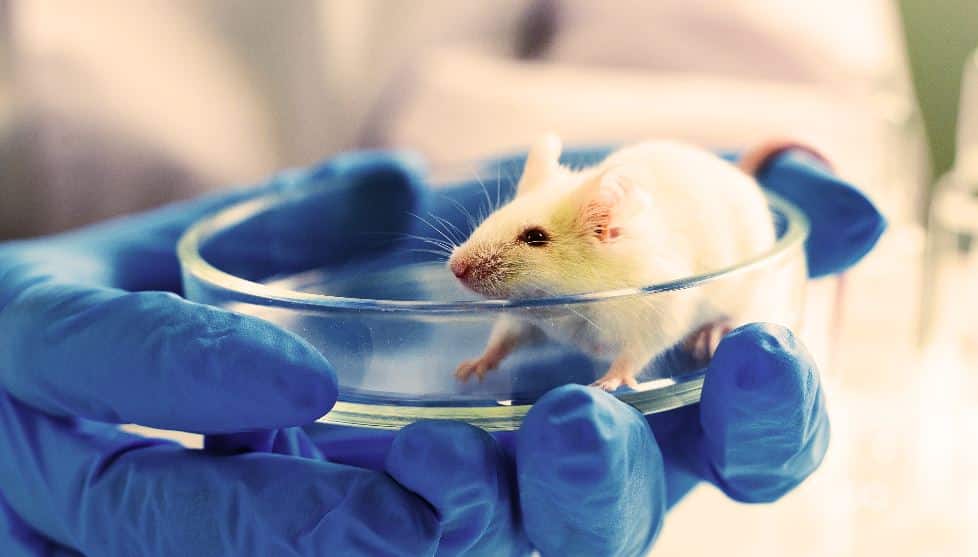 In Part 3 of this series on rational tinnitus drug treatment, I will review the advantages and limitations of using animal models to understand this seemingly simple, yet intractable disorder. Part 1 provided information about control with medication and the impact of tinnitus on individuals. Part 2 detailed the difficulties associated with the desire to treat tinnitus with a pill.
In Part 3 of this series on rational tinnitus drug treatment, I will review the advantages and limitations of using animal models to understand this seemingly simple, yet intractable disorder. Part 1 provided information about control with medication and the impact of tinnitus on individuals. Part 2 detailed the difficulties associated with the desire to treat tinnitus with a pill.
Can Animals Experience Tinnitus?
Perceiving sound that does not arise from an internal or external source of acoustic energy has, for centuries, perplexed philosophers, scientists and many individuals who experience tinnitus. Likewise, for centuries, limited understanding of the pathological mechanisms that lead to acute and chronic tinnitus has prevented the development or discovery of a cure.
Many significant discoveries in medicine derive from experiments using animals. An animal model of experimentally induced diabetes led to the discovery of insulin1. For over a century, nearly every Nobel Prize in Medicine has been awarded for research that, at least in part, used animal models [National Association for Biomedical Research; www.nabr.org].
Cancer treatments, vaccines, gene therapy, organ transplantation, and effective medications for pain have depended upon animal research and animal models. Similarly, the potential advances that can be made in the field of tinnitus with the development and application of animal models are significant.
Tinnitus and Hearing Loss
Clinical observations have shown that tinnitus is almost invariably associated with hearing loss. If tinnitus directly or indirectly results from pathological changes that affect basic mechanisms of sound transduction in the cochlea and/or the subsequent neural processing of acoustic information, then there is no a priori reason that animals cannot experience the sensation. Support for this argument is provided by the study of pain. No one would argue that animals cannot experience pain. Chronic pain, in many ways, is similar to chronic tinnitus. Both are subjective sensations that cannot be directly measured and neither typically has an immediate physical correlate.

These species share between 95 and 98 percent of their genomes and get most of the same diseases, for many of the same genetic reasons. Therefore, the results of experiments often correlate to human biology. Image: The Jackson Laboratory.
While pain and tinnitus often result from damage to the periphery, they frequently persist well after the immediate damage is resolved. If tissue damage can cause pain, it is likely that damage to a specialized sensory organ such as the cochlea can similarly produce acute as well as lingering pathological effects. This is certainly the case in humans, and it is clear that neither cognitive or language function is required for the auditory effect, heard as tinnitus.
Given that humans and animals have many physiological systems in common, it is entirely plausible that they share many sensory states. The auditory systems of small mammals such as mice, rats, guinea pigs, chinchillas and cats, have been studied extensively. Many details of auditory processing have been first determined in animal experiments, and later successfully applied to human audition. For example, the fundamental process of sound transduction at the level of the cochlea, the neural extraction of acoustic information in the brain stem, and knowledge of central auditory organization, are all derived from animal work.
Therefore, if tinnitus arises because of basic pathological changes at one or more levels in the auditory pathway, tinnitus should appear in animals that have auditory system commonality with humans. As a sensation, tinnitus is likely to be a primitive percept.
The shared physiological systems between humans and animals suggest that they likely experience similar sensory states, including tinnitus. Extensive studies on the auditory systems of small mammals have provided insights applicable to understanding human audition, indicating that tinnitus is a primitive percept resulting from pathological changes in the auditory pathway.
Can Tinnitus Be Reliably Measured in Animals?
If we accept that animals can experience tinnitus, the next question is, “Can the sensation be reliably measured in animals?” Several methods have been developed to detect and quantify tinnitus in animals2-5. Each method has advantages and disadvantages. However, the fundamental features of any animal model, are the following:
- The model should detect tinnitus and not associated phenomena such as hearing loss;
- T model should be reliable providing reproducible results;
- most importantly, the model should mirror features of tinnitus in humans.
Using the experimental paradigm of conditioned suppression of an operant response, we have characterized the tinnitus induced in rats after a single one-hour unilateral exposure to 115 dB SPL octave-band noise6,7. Results from the model are reproducible, and many similarities exist between this experimentally induced tinnitus in animals and the clinical manifestation of tinnitus in humans. For example, the experimental tinnitus typically develops in a delayed fashion several weeks after exposure; the tinnitus becomes more prominent as the animal ages; the tinnitus is tonal in nature; finally, not all animals exposed to the damaging noise develop tinnitus.
Can Animals Facilitate Discovery and Development of Treatments for Tinnitus?
De Novo development of effective pharmacologic or surgical treatment for any disorder is a time consuming and expensive undertaking. Novel drug development is prohibitively expensive when candidate drugs or pharmacologic targets are unknown. Proof-of-concept is required before initiating human trials of novel treatments.
This is where animal models clearly can be advantageous. Animal models can facilitate the development of novel drugs for treating tinnitus by screening candidate agents using high throughput techniques. The models can also be used to test existing drugs as tinnitus modulators. Anecdotal observations of tinnitus improvement with medications that modulate the inhibitory neurotransmitter gaba-aminobutyric acid (GABA) have been observed in humans for many years.
A rational approach to investigating promising drugs would use a controlled population, with tinnitus from a known cause, not susceptible to a placebo response, amenable to repeated measures at multiple doses. Animal models of tinnitus are ideal for this type of investigation8. They are also the only ethical means of investigating drugs with unacceptable side effects, such as vigabatrin9. While such drugs would not be safe to use as therapeutics in humans, they can reveal important neurotransmitter roles in tinnitus, which once identified may be addressed by safer drugs.
Animal models play a valuable role in the development of novel drugs for tinnitus by facilitating candidate screening and testing of existing medications. They provide a controlled environment to investigate promising treatments, identify neurotransmitter roles, and address potential side effects, leading to safer and more effective therapeutic options.
Are There Limitations to studying Tinnitus Using Animal Models?
Tinnitus can be viewed from two different, but related, perspectives: On the one hand there is the tinnitus sensation, and on the other, the associated impact or reactive consequences on attention and emotion. The suffering that accompanies tinnitus has many dimensions, including sleep impairment, poor concentration, negative emotional states such as inability to enjoy life, and cognitive disruption.
We do not know if animals suffer from their tinnitus. This has both positive and negative implications for animal studies. If animals do not suffer from their tinnitus, they then provide an opportunity to study the pathological mechanisms of tinnitus sensation, independent of emotional factors. This is very useful, but of course, it is a limitation as well. Animal studies may not be able to illuminate the mechanisms responsible for the emotional aspects of tinnitus.
Summary
Animal models of tinnitus have been developed and are proving useful in expanding our understanding of the complex problem of tinnitus. Animals can provide reliable, valid and relevant information. They provide unparalleled opportunities to explore aspects of the disorder that cannot be investigated in humans.
Although some aspects of tinnitus cannot be studied using animal models, this does not detract from their utility, but rather emphasizes the complexity of the problem and the need for complementary approaches to scientific investigation.
References:
- Banting FG, Best CH, Collip JB, Campbell WR, Fletcher AA. Pancreatic extracts in the treatment of diabetes mellitus: preliminary report. 1922. Cmaj 1991;145(10):1281-6.
- Bauer CA. Animal models of tinnitus. Otolaryngol Clin North Am 2003;36(2):267-85.
- Jastreboff PJ, Brennan JF, Coleman JK, Sasaki CT. Phantom auditory sensation in rats: an animal model for tinnitus. Behav Neurosci 1988;102(6):811-22.
- Bauer CA, Brozoski TJ, Rojas R, Boley J, Wyder M. Behavioral model of chronic tinnitus in rats. Otolaryngol Head Neck Surg 1999;121(4):457-62.
- Heffner HE, Harrington IA. Tinnitus in hamsters following exposure to intense sound. Hear Res 2002;170(1-2):83-95.
- Brozoski TJ, Bauer. CA. Learning about tinnitus from an animal model. Seminars in Hearing 2008;29(3):242 – 58.
- Bauer CA, Brozoski TJ, Myers K. Primary afferent dendrite degeneration as a cause of tinnitus. J Neurosci Res 2007;85(7):1489-98.
- Bauer CA, Brozoski TJ. Assessing tinnitus and prospective tinnitus therapeutics using a psychophysical animal model. J Assoc Res Otolaryngol. 2001; 2(1):54-64.
- Brozoski TJ, Spires TJ, Bauer CA. Vigabatrin, a GABA transaminase inhibitor, reversibly eliminates tinnitus in an animal model. J Assoc Res Otolaryngol. 2007;8(1):105-18
Dr. Bauer is Professor and Chair of the Division of Otolaryngology Head and Neck Surgery at Southern Illinois University School of Medicine, Springfield, Illinois, and a recognized international authority on tinnitus.
Her areas of interest and expertise relate to hearing loss, balance disorders, and evaluation and management of tinnitus (ringing in the ears). It is this latter area in which she is writing here about her research – research dedicated to understanding the central mechanisms responsible for generating tinnitus, and to develop effective strategies for tinnitus treatment.






